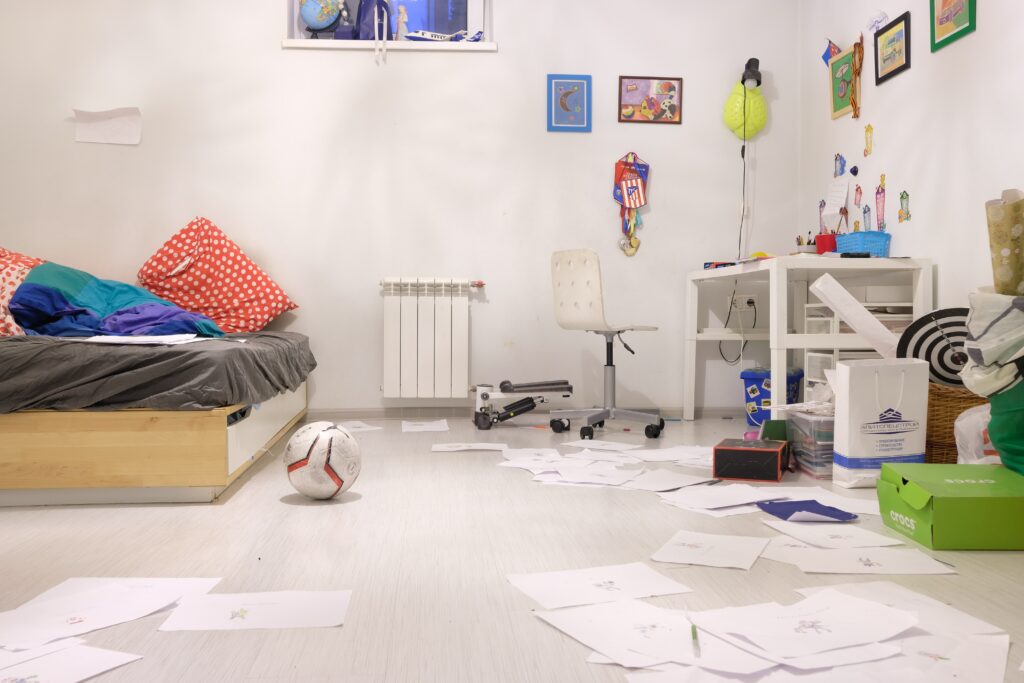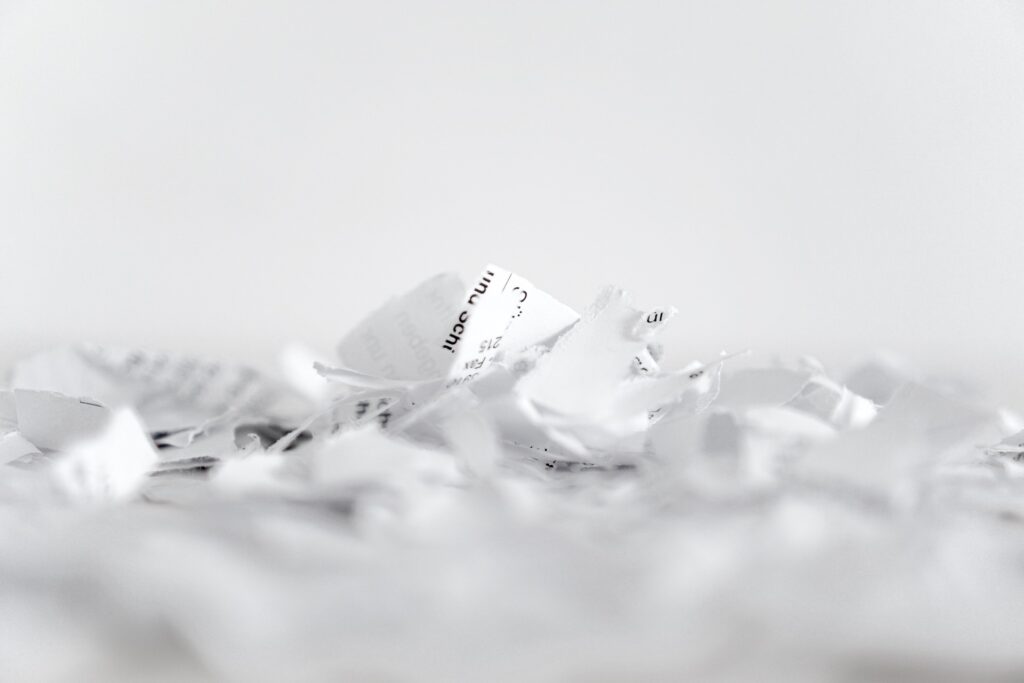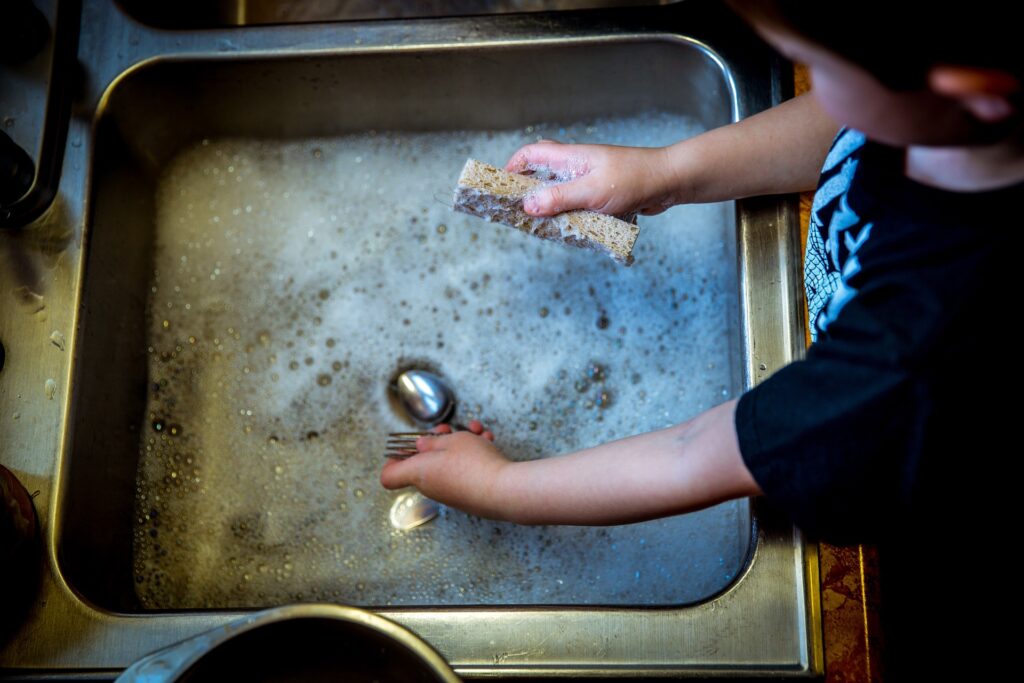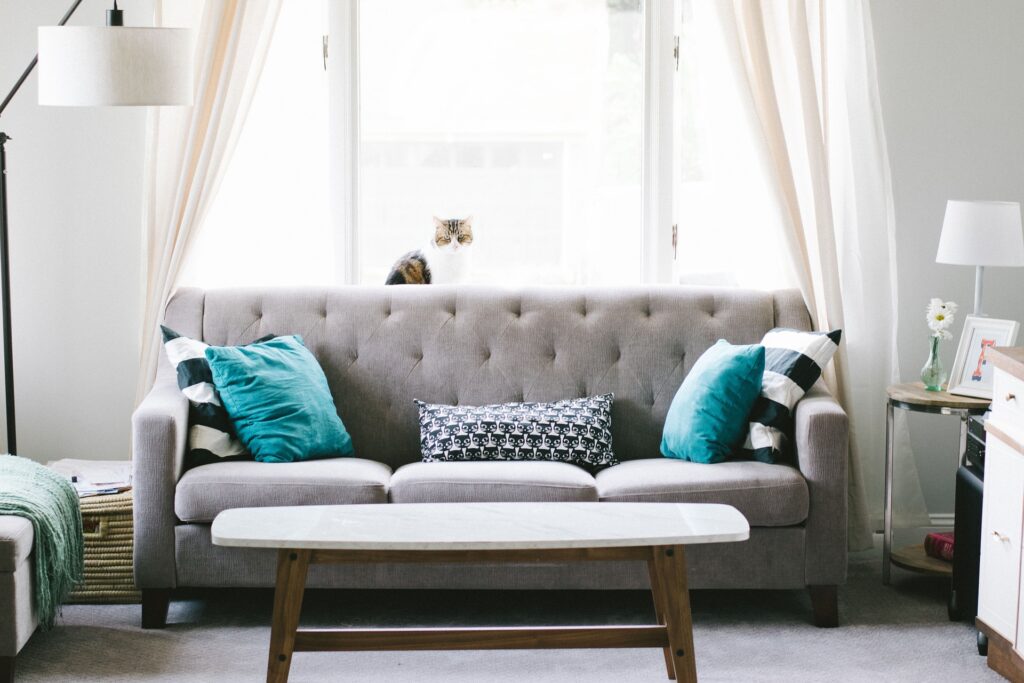Having a messy house can be overwhelming and make it difficult to know where to start. You might feel like you’re spinning your wheels, not making any real progress as you try to clean up the mess. But don’t worry – there is an easy way to break down the task into manageable chunks that will help you get organized quickly and efficiently.
The key is understanding what areas of your home are most important when it comes to cleaning. Therefore, you can focus on those first and tackle the rest later. This approach ensures that the essential areas of your home are taken care of before tackling less urgent tasks such as organizing closets or dusting shelves.
In this article, we’ll look at what should be cleaned first in a messy house so that you can get started right away on getting your space back in order!
What To Clean First In A Messy House: Simple Way To Help You Get Started

We all have those days when it feels like getting up and cleaning is the last thing that we want to do. Maybe you need some motivation to get started, or maybe you just don’t know how to approach it. To help you get motivated here’s a simple way to get started.
Gather Your Supply
Having all the supplies in one place is a great way to kick-start your cleaning spree. Doing this will eliminate excuses for not cleaning since all the necessary materials will be right at hand. Whether it’s dusting supplies, vacuum cleaner bags, sponges, mops, brooms, or cloths. Make sure you have them before you start cleaning. Gather them in an easily accessible place and move on with your plans for a cleaner home.
Organizing your supplies also helps keep track of what stock needs replenishing over time. You’ll know exactly which items are running low and avoid being caught out when that unexpected guest pops by!
It’s a great idea to label bins or boxes so anyone in the household knows where the supplies belong after use. This helps ensure that everyone takes part in the tidying process. Plus, it makes for an easier time for everyone involved– no lost items going astray!
Have a Cleaning Checklist
The idea behind creating a checklist is that once you finish one task, you can cross it off the list and feel rewarded for your hard work. It also gives you a visual representation of what still needs to be done to break it down into smaller achievable tasks instead of looking at it as one huge job. Plus, the satisfaction of watching your list diminish as the day progresses will give you an even greater sense of accomplishment!
Besides feeling more organized and driven, making a checklist is also great for scheduling. If you plan out in advance what needs to get done around the house daily cleaning/month/year, then you won’t have any surprises down the line when regular maintenance becomes necessary.
Making sure all hygiene-related tasks are completed within their recommended periods (like washing sheets or dusting) will prevent bacteria from building up, which could lead to health problems or unwanted odors in our homes.
Listen to Music
Music cannot only make tasks more enjoyable but also give us an extra boost of energy or motivation to tackle a big project. Pick an upbeat genre or one that makes you feel energized. For some people, that might be rock or pop; for others, it could be rap, jazz, or even classical music. No matter what you choose, having some tunes playing in the background can help you stay on track and avoid feeling overwhelmed by the task.
Putting together a playlist specifically for cleaning can make it easier to hit the ground running when it’s time to start. Start with your favorite songs. Then, add other tracks that make you want to dance or put a smile on your face. Really anything that helps lift your spirits and prepares you to roll up your sleeves and start scrubbing!
In addition to giving yourself an extra push of motivation, listening to music while cleaning can also provide an outlet for stress relief and combat fatigue. Cleaning can be repetitive sometimes, so playing something pleasant in the background is important. This will keep your energy levels up while allowing your mind to relax and focus on the job.
Wear Real Clothes
Wearing real clothes while cleaning can be beneficial in several ways. First of all, it can improve your self-esteem while getting down and dirty with the task at hand. Rather than staying in pajamas or old, ill-fitting clothes all day (which can further reduce motivation), putting on something fresh and nice can make you feel more productive and energized.
Additionally, wearing real clothes gives us an extra sense of responsibility – because who likes to wear their “Sunday best” for something as mundane as washing dishes or scrubbing floors?
Furthermore, wearing something presentable will also encourage us to take our duties more seriously. When we look good, we often feel more responsible for the task at hand. After all, why would we work so hard to make ourselves look sharp if not for a special occasion? So being well dressed could even boost our performance regarding chores around the house!
Read a Housekeeping Book or Article
No matter what kind of motivation problems you have, the simple act of reading something related to the task at hand can be extremely helpful. You may feel more eager and inspired after reading tips on how to clean effectively or by reading about someone else’s success story when it comes to keeping things in order.
If you’re looking for something specific, such as organization tips or spring cleaning advice, plenty of books cater specifically to those needs. These books often detail which tools to use, how long it takes for each task, the difficulty level each job requires, and more. Additionally, there are tons of articles online discussing the same topics.
Reading about these types of activities gives us an idea of what we should expect and prepare for when we take on these tasks. Seeing the big picture can help us develop a plan so that we’re not just winging it when cleaning. Not only will this make our work easier but also be more efficient overall — two important factors for getting motivated in tackling a big job.
It’s also important to note that reading about housekeeping doesn’t necessarily have to be boring or tedious. In fact, if you find content that matches your style and interests – maybe even humorous stories! It can lift your spirits and put a smile on your face while offering practical knowledge on effective organization methods or inspiring words from seasoned professionals in the industry. The key is finding material that speaks directly to you!
Make It a Family Cleanup
Doing chores in a family activity encourages collaboration and creates a sense of purpose. When everyone chips in and participates in the cleaning process, it can help increase motivation levels! Having assigned tasks for each person ensures that responsibility is shared throughout the group and allows for equal contribution from each member.
Not only does this method provide motivation, but it also provides an opportunity for fun and bonding with your loved ones. Have fun making up wacky rules or designating rewards for completing tasks. Getting creative will improve the experience as everyone works together towards a common goal. Moreover, families who use this technique have been known to talk more often and laugh more together. All while getting some much-needed chores done quickly!
Making household chores collaborative and enjoyable will create motivating momentum for you and your family members and might lead to better organization habits in general. Remember that any task can seem daunting when faced alone. However, when completed with friends or family, even the most difficult tasks become manageable!
Give Yourself a Reward
By rewarding yourself for your hard work, you not only add incentive but also help boost your motivation. This can be anything from treating yourself to an ice cream cone or spending an extra hour with friends or family—whatever makes your day brighter!
It doesn’t have to be expensive; it could just be setting aside time for a relaxing bubble bath. The key here is to reward yourself for completing your cleaning objectives. That way, once you finish the job, you will have something positive waiting for you at the other end, in addition to the satisfaction of completing your task!
This strategy may seem simple enough, but it can make a big difference in helping us stay motivated for cleaning tasks. After all, sometimes, we just need some additional encouragement! So why not try this idea next time you have some serious deep cleaning work to tackle? You might be surprised by how much easier this small change can make things!
If you’re overwhelmed by a messy house, starting with the most important tasks is important. Here are some tips for what to clean first when tackling a messy home:
What To Clean First In A Messy House: Tips and Tricks
If you’re overwhelmed by a messy house, starting with the most important tasks is important. Here are some tips for what to clean first when tackling a messy home:
1. Start By Scheduling a Full-House Cleaning
The first step in scheduling a home cleaning is deciding how often it needs to be done. Depending on how much clutter and dirt accumulates, this could range from once or twice a year right up to monthly visits. Evaluate your home’s current condition.
Once you have decided when to schedule the cleaning, you must figure out who will do it. If time and money allow, hiring professional cleaners is the best option. They have access to powerful products and deep cleaning methods that can quickly revive the look of your home. However, some people prefer DIY solutions. Therefore, if this is something you’re interested in, plenty of excellent guides provide highly detailed instructions on how to clean every item in your house from top to bottom.
Next, evaluate what’s inside each room, as this can affect how long everything is cleaned properly. Consider whether any items need special care, such as furniture pieces that require polishing or upholstery that needs steam cleaning. This will help you determine whether you need additional tools or supplies, so everything gets done thoroughly and efficiently.
2. Collect All The Trash

This means picking up all those candy wrappers, banana peels, empty bottles, cans, used tissues, and any other trash just sitting around. For some people, this is the hardest part because it means facing reality. Even if you don’t want to admit that you left all that mess lying around in the first place.
The best thing to do is grab a big garbage bag or two and start collecting all that trash. Check every corner and crevice of your house. That cardboard box full of old receipts could be hiding an old candy wrapper or something else equally gross!
Once everything has been gathered into one pile, you can separate out what needs to be recycled from what needs to find its way into the regular garbage bin.
3. Do The Dirty Laundry

Doing the laundry is essential because it removes dirty clothes from circulation while they are still clean. You can only put off this chore for a while, or else you’ll end up with clothes that are impossible to salvage. Plus, starting with an easy task like laundering will give you some extra energy and confidence to keep going with other tasks on your road to tidying up.
Treating it as its own entity is the trick to ensuring that laundry doesn’t take over again. Don’t allow laundry baskets and hampers to overflow between washes. Try setting aside 30 minutes a week for sorting, pre-washing (if necessary), and running a load of clothes through the wash cycle. Once those items have been washed and dried (or air dried), put them away immediately rather than leaving them in their baskets, which only encourages further procrastination.
You also want to ensure you’re doing the necessary loads. Sort out your colors immediately. Therefore, you don’t have to separate them afterward or figure out how to combine two loads of light colors once everything has finished washing. Finally, practice preventative maintenance by removing dirtier items, such as athletic wear, before they get too far along in the laundering process. This will help reduce strain on your appliances and yourself!
4. Pick Up Dirty Dishes and Cups

Even if tackling the entire mess in one go seems too overwhelming, simply focusing on collecting all the dishes and cups can make enough of an impact to motivate you to keep going. With each item picked up, taking care of the rest becomes easier and easier.
To make cleanup even more efficient, have receptacles ready for each type of dish or cup. Photo boxes work great for things like mugs and shot glasses as they’re easy to stack. Bundling small sets of glassware together in newspapers also works well and minimizes breakage risk. For plates, having a couple of baskets or spare bags around will be handy when you want to quickly grab them all at once without counting or touching each one individually.
If kids are helping with cleanup duty (which they should!), assigning them specific tasks like picking up dishes and cups helps teach responsibility while getting the job done quickly. Little ones tend to be surprisingly effective helpers as long as they know what they’re responsible for! And don’t forget about scooping up pet bowls – let’s not leave our furry friends out of it either!
5. Clean Room By Room

This strategy reduces the feeling of being overwhelmed and can help make tackling the mess more manageable. First, start small and pick one room to focus on. Once you’ve chosen the room, take everything out and organize it into three piles:
- Keep, donate/sell, and trash.
- As you sort through each pile, create smaller piles depending on what needs to happen with each item.
- Do not try to do too much in one go.
Once all the items have been properly sorted and placed into their respective piles, it’s time to start cleaning! Dust off shelves and furniture; reorganize drawers; scrub baseboards; vacuum corners; mop floors; wash windows; clean fixtures. The list goes on! Aim for a top-to-bottom cleaning approach, so no spot is missed or left behind.
Once you’ve finished cleaning the room, make sure to put everything back properly, so it’s easy to maintain over time. If needed, buy organizational tools such as bins or baskets to make tidying up easier in the future.
6. Clean The Bathroom

Start with taking out all non-essential items from around the tub and sink. Make sure to take time to throw away the trash, like empty bottles and packaging. This will make cleaning much smoother.
Fill your sink with warm water and add soap or other cleaning liquid solution. Wipe down the countertop, sink basin, and faucet fixtures until they shine. Be sure to rinse well afterward, so no residue remains behind.
Now it’s time to tackle the toilet! Clean both the inside and outside of the bowl with an appropriate cleaner for toilets, such as vinegar-based solutions or specific products created for this purpose. Remember to scrub any tough spots with a stiff-bristled brush before flushing away all dirt and grime loosened up during cleaning.
Next, mop the floor with a damp mop to remove dust, dirt, and hair from accumulating over time. Pay extra attention to areas where hairbrush bristles accumulate on the floor. These are notorious for harboring bacteria if left uncleaned for too long! It is also important to spend time cleaning under furniture to get rid of cobwebs or forgotten items that have fallen underneath them over time, nightmarish messes that must be removed by hand!
Lastly, finish up by wiping down all surfaces, including mirrors, shower curtains (or enclosures), and counters, once more with an all-purpose cleaner before rinsing everything off completely again — better safe than sorry.
7. Clean the Kitchen

One of the biggest challenges is often cleaning the kitchen, with multiple surfaces and appliances that need attention.
Start by getting rid of any clutter around counters and appliances. That includes dishes in the sink or on countertops, clothes draped over chairs, paperwork on the kitchen table, etc. Doing this will make it easier for you to clean all surfaces quickly because there are fewer distractions.
Next is tidying up any utensils or items left out from meal prep or cooking. Get them put away in their proper places so that the entire surface is clear and ready for cleaning. Now ensure all small crumbs or food particles are swept away using a broom or vacuum, depending on your preference. This will help ensure that no pests are attracted to your messy kitchen!
Now comes the actual deep-cleaning part, which can take some effort but yields great results. Start by dusting off surfaces thoroughly with a damp cloth, followed by an initial wipe-down with disinfectant cleaner. Remember to pay extra attention to door handles, light switches, and other areas where bacteria tend to linger.
Then use a sponge with warm (not hot!) soapy water to meticulously clean all surfaces in your kitchen. Let each section dry before moving on to another one. Don’t forget to wipe down your cabinets inside and out. Sometimes, these areas can collect grease during cooking which needs additional attention!
Finally, complete your deep-clean by mopping floors with hot water mixed with a mild disinfectant cleaner. Allow them to dry completely once they’re done to avoid any future slips or falls from wet floors!
8. Clean The Living Room

The first thing you should do is remove any clothing or other items that are strewn throughout the living areas. Pick up all items – from toys and books to clothes and shoes. Put them into their respective containers or closets. This will give you a much clearer picture of what needs to be done. Furthermore, it helps reduce the feeling overwhelmed by the large mess.
Once all those items are out of sight, it’s time to tackle dust and dirt. Start dealing with flat surfaces such as tables, shelves, television stands, and counters first before moving onto other surfaces like windowsills, window frames, and baseboards. Vacuuming carpets is also recommended since it’s more efficient than using a broom or mop. Once all these have been taken care of, clean any glass-like surfaces like picture frames or mirrors using an appropriate window cleaner.
Lastly, take care of any trash, like empty cans or water bottles lying around the floor or sofa cushions. While doing so, keep an eye out for any spills or stains that might need a more thorough cleaning proces. This involves different types of cleaning agents and tools depending on what type of material was stained (for example, leather furniture might require leather-specific cleaners).
Frequently Asked Questions
Q: How to make a weekly cleaning schedule?
Start by breaking the room clean into individual chores; vacuuming, dusting, wiping surfaces and mirrors, etc. Plus, add any specific maintenance tasks in each room that need to be tended to – like rotating the mattress in your master bedroom or changing air filters in living room vents. Once this is done, try blocking off days of the week for general room cleaning. Additionally, reserving bigger tasks like deep cleaning your bathrooms or closets for days when you have more time. You’ll find that a cleaning routine makes it easier to accomplish everything and beat the clutter!
Q: Does having a clean kitchen and dining room help with productivity?
Living in a clean, organized house contributes positively to productivity and mental clarity. At first glance, cleanliness and productivity may not be connected, but a cluttered house is filled with distractions. Having a clean home helps reduce distractions so that you can focus on the task at hand. As anyone who’s had to struggle through working in a cluttered environment knows all too well. Tidying up can make a noticeable difference in how efficiently one works!
Q: How to clean a messy house fast?
An effective way to approach this is to start by setting a timer for an achievable period that allows you to focus on one area at a time. Make sure you’re equipped with the right tools — vacuum, mop, broom, supplies — that will make your job easier. Plan how you’ll clean each room and stick to it. The key here is to stay focused and consistent. Tackling chaos one small step at a time until the entire house is sparkling clean!
Q: How does a clean house help with mental health?
When our home is organized and tidy, a sense of accomplishment makes us feel better about ourselves. Not only does it provide a physical environment that is pleasing to look at, but having a system in place makes daily tasks much easier to complete and requires less time each day. Additionally, the feeling of being overwhelmed due to clutter can be eliminated, relieving stress. Last but not least, living in an untidy space often reflects on our thoughts and emotions. It makes us feel down and out. Whereas, if we have a clear area of living, we might find other things to focus on more than just the mess around us.
Q: What cleaning supplies should I use to clean floors?
For hard floorings such as tile, laminate, and vinyl, it’s recommended to use a microfiber mop and a neutral floor cleaner. Microfiber mops don’t just push the dirt around like traditional mops. They use thousands of small fibers to lift dirt up off the floor so it can be collected in the fibers. Combine that with a gentler cleaning solution – like a pH-neutral one. Then, you get sparkling floors without causing streaks or dulling the finish of your flooring. Vacuuming is key if you have carpets or rugs, followed by spot cleaning with an enzyme-based cleaner. Enzymes help break down organic matter like pet stains and other spills so they can be easily removed from your carpet.
Final Words
It’s never easy to clean a messy house all at once, and figuring out where to start can be overwhelming. A good rule of thumb is to always start with the areas most visible. From the entryway and work your way inward, room by room. By tackling what you see first, you’ll create an immediate sense of accomplishment that’ll motivate you through the rest of the cleaning process. Not only will this make your home look better right away, but it will also set a helpful precedent for staying on top of clutter in the future!

